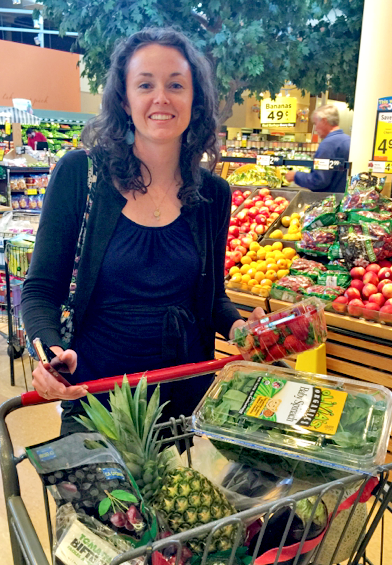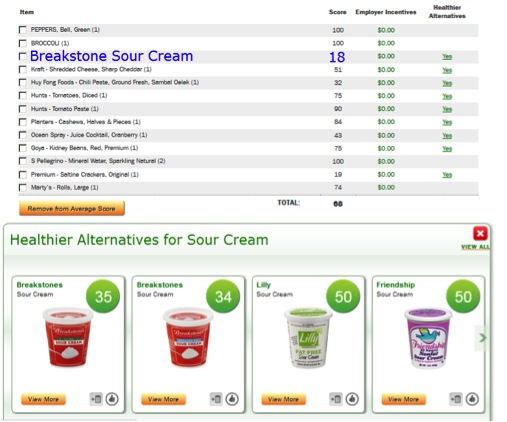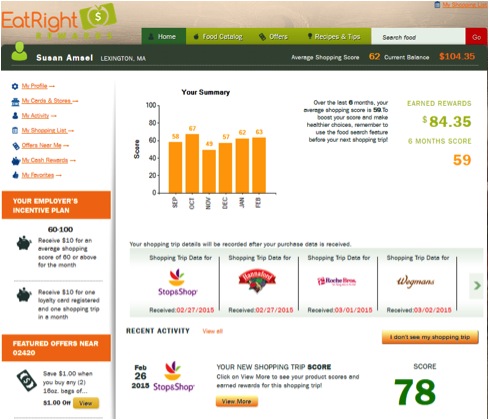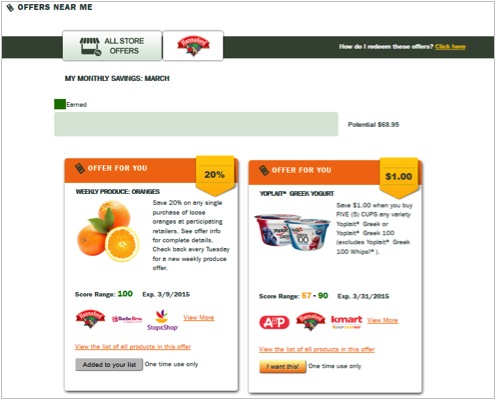When Carolyn Preston goes grocery shopping, she tries to make healthy choices for her family. A handy little app on her smartphone makes it a lot easier.
With it, she can scan the barcode of a food item and get all kinds of useful information. First and foremost, its nutritional score on a scale of one to 100 with one being the least healthy and 100 the most.
To give you an example, fresh fruits and vegetables are generally 100 and coke zero. That point difference is probably a no-brainer, but Carolyn has been caught off guard by some of her discoveries.
Take yogurt. If you think all containers are created equal and they’re all healthy, you’d be wrong. “Some yogurts score in the 20s,” says Carolyn, “and some yogurts score in the 90s. The difference? It’s the sugar. The ones that have a lot of sugar score low. I’ve noticed that flavored yogurts have unnecessary added sweeteners.”
Carolyn got the app from her employer, Harvard Pilgrim, which provided access to all of its employees as part of its EatRight Rewards℠ program. “
Here’s how it works: Once they sign up, employees can access the program via the computer or a smartphone. It will ask for a zip code and then list all of the participating grocery stores in the area. Employees can sign up for as many as they want and can include other family members.
Not only can individual items be scanned, all grocery items (except alcohol and baby food) are scanned at the checkout counter and the information is sent electronically to the employee’s EatRight Rewards℠ account.
The employee can login and take a look at how well he/she did making healthy choices. Along with the nutritional score, there’s additional information, such as calorie count, sodium and sugar content and what might be healthier alternatives.
The program is powered by a Massachusetts-based company called Nutri-Savings. The company hired a team of nutritionists to evaluate and assign healthiness scores to more than 100,000 food items based on 30 different nutrient factors.
“We had our nutritionists look at the way they did the scoring,” says Susan, “and they gave it their seal of approval.”
Harvard Pilgrim not only provides access to the program, it offers employees incentives to use it and make healthy food choices. $20.00 a month, for one thing. Ten dollars just for shopping at a participating grocery store and another ten if their overall score for the month is 60 or over. In addition, food and beverage companies and supermarkets offer eCoupons – there are even coupons for fresh produce.
In 2014, it began providing the EatRight Rewards℠ program to outside employers that offer Harvard Pilgrim insurance plans to their employees. The employer groups can design their own rewards program, but Susan highly recommends including incentives above and beyond the rewards of making healthy choices.
When it piloted the program to its own employees in 2013 (without any incentives) slightly more than 20 percent signed up. In April 2014, the incentives were added in. “We saw a dramatic increase in adoption of the program,” says Susan. “We went from 20 percent plus to over 40 percent. Normally, wellness programs average 10 to 12 percent adoption, so this program does something right because we’re able to get such high numbers.”
Carolyn certainly thinks the program is doing something right. She’s learned to be on the lookout for sugar at every turn of the grocery cart. “The labels don’t help as much as you’d think,” she says. “Take energy bars. There are so many different chemicals and sugars — four different kinds of sugars with different names — and they don’t score well at all. Yet, energy bars are marketed as a health food. Watch out for added sugar!”
If you’d like to use EatRight Rewards℠ to keep score of the food you’re buying and you’re not a Harvard Pilgrim employee, check with your own employer. If he/she offers Harvard Pilgrim insurance, the program may be available in your workplace.






Leave A Comment